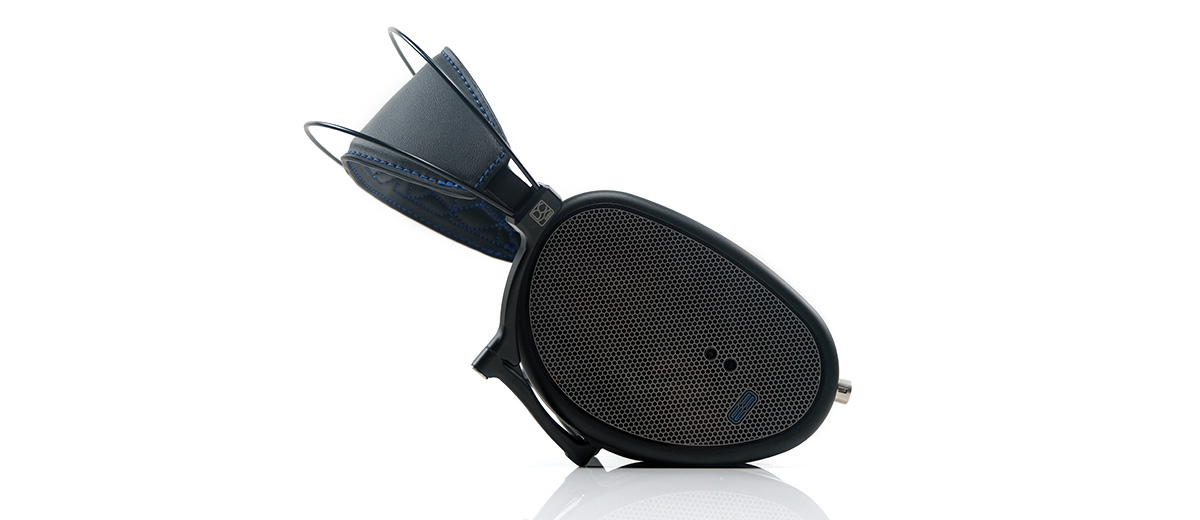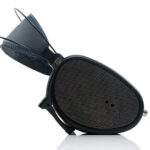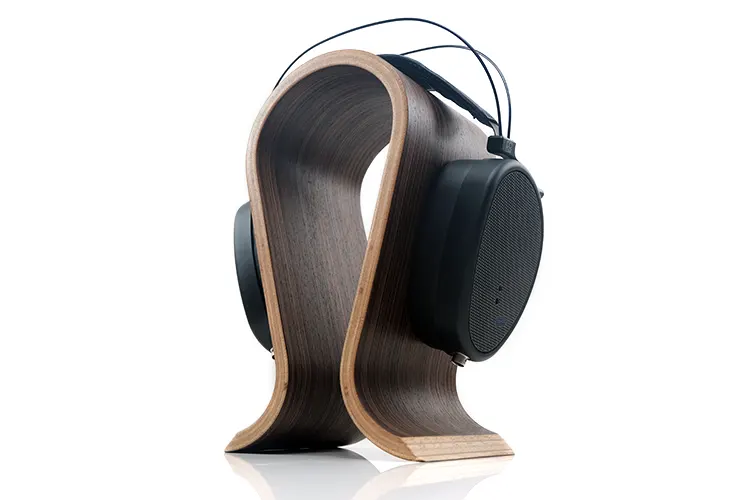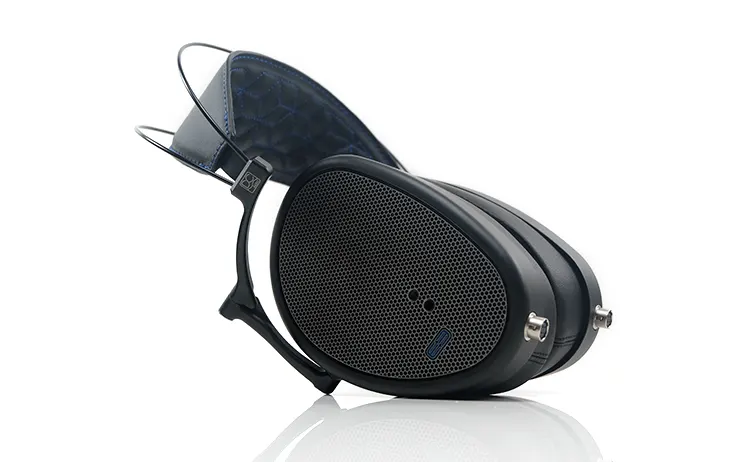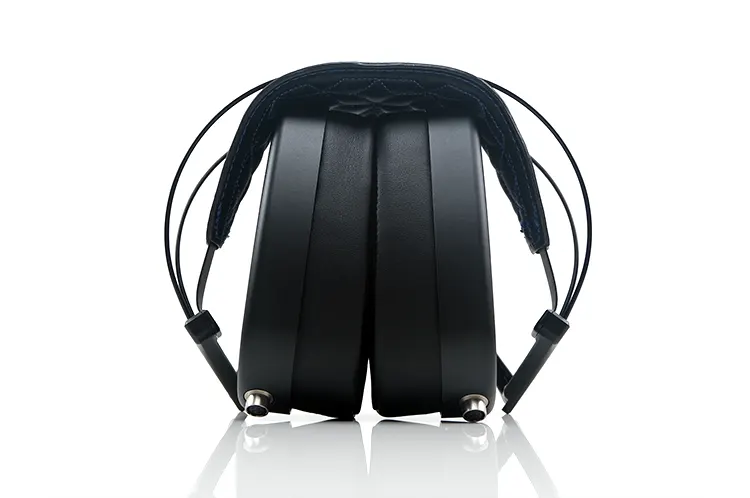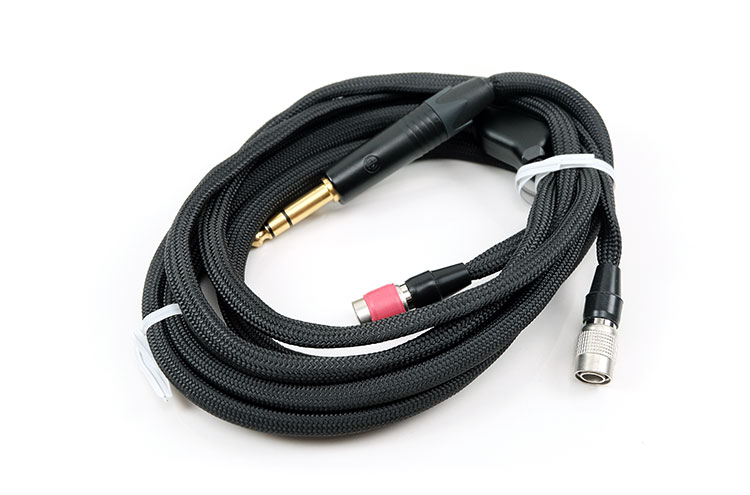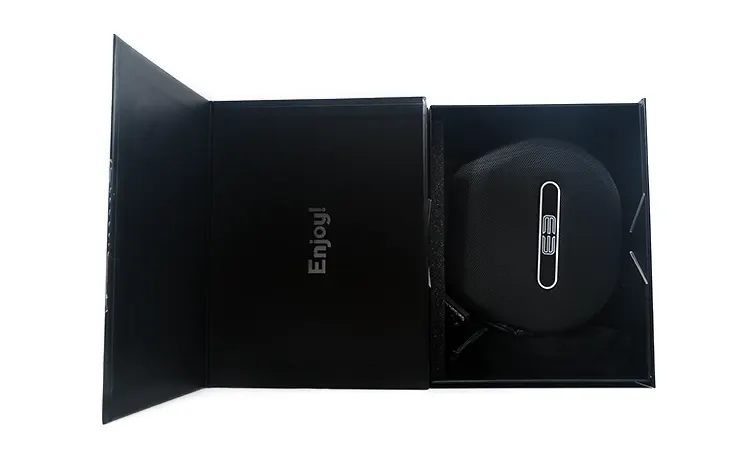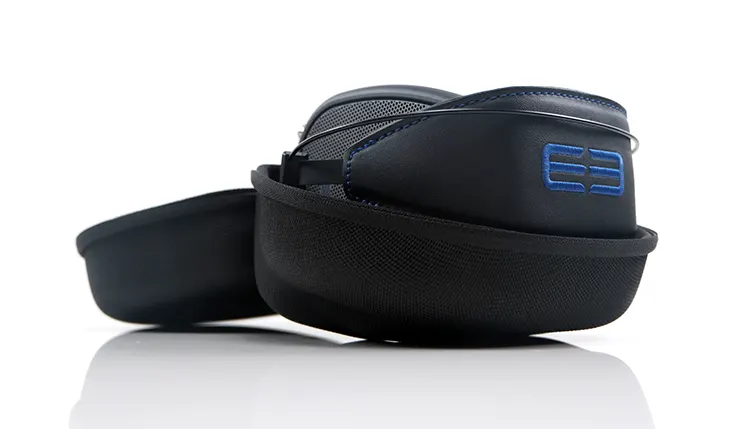Today, we review the Dan Clark Audio E3, which is a new set of closed-back full-sized planar magnetic headphones and the successor to the Ether 2. It is priced at $1999.99.
Disclaimer: This is a sample sent to us is a sample in exchange for our honest opinion. Headfonics is an independent website with no affiliate links or status. We thank Dan Clark Audio for their support.
To read more about Dan Clark Audio products we have previously covered on Headfonics click here.
Note, this review follows our latest scoring guidelines which you can read up on here.
The Dan Clark Audio E3 is technically an Ether line 3rd generation planar magnetic headphone in a closed-back format and in a way marks the true end of the older Ether C Flow. It also provides a more affordable option to the flagship Stealth launched in 2021.
Priced at $1999.99, the E3 sits neatly in between the entry-level AEON 2 series and the TOTL Stealth closed-back. Aside from the Corina, the E3 doubles down on the foldable ovoid or teardrop form factor, now the dominant Dan Clark Audio in-house design language.
The launch also marks the introduction of a new generation planar driver as well as a further refinement of AMTS technology to produce what I feel is the company’s liveliest closed-back tuning to date.
Tech Highlights
5th Generation driver
The E3’s driver is a 5th generation single-sided V-planar driver measuring in at 72x45mm this time around. That is almost the same size as the Ether 2 driver, perhaps 1mm longer on the long side and smaller than the 50x76mm Stealth driver.
The 5th generation comes from using an updated diaphragm material, (unmentioned for specific material), and an improved engineering process for the company’s long-standing patented V-Planar knurling design, (diaphragm creasing).
The E3 driver is rated at 27Ω impedance and -90 dB/mW sensitivity so despite being more sensitive than the 86 – 87 dB/mW Stealth you will still be looking at an amplifier or a portable device with good output performance capability.
I have seen mention of 1W or above at around 20-30Ω to drive the E3 which, before this review, would not have surprised me given that I have mentioned a similar output power benchmark before in some of my previous DCA headphone reviews.
AMTS
The 5th gen process would also not be complete without a new AMTS design making the E3 the 4th headphone from DCA that incorporates this specific technology.
Dan did give a heads-up as far back in 2021 regarding the flexibility of their AMTS technology to accommodate a wide range of headphone designs and so it has come to pass that the E3 also benefits from a new AMTS configuration.
In this instance, the new AMTS version has a new driver coupling and sits somewhere in between the Corina and the Stealth/EXPANSE in terms of how it was deployed.
For those new to AMTS it stands for Acoustical Metamaterial Tuning System and on its own it looks like a simple ‘honeycombed wedge’ but in reality, it does a lot of complex things.
It is primarily engineered to manipulate the sound waveguides and diffusion control from the driver to the ear to create what the company describes as a natural, immersive soundstage within a closed-back design.
The waveguides in the AMTS design are ‘programmable’. That means by blocking one or more guides in the structure along a certain axis you can adjust the level of damping you want to target specific high-frequencies as well broader ranges without loss of detail.
When correctly configured you also have a programmable Helmholtz or quarter-wave resonator to control high-frequency standing waves and resonance via a ‘ramped’ shaped design.
Design
DCA has taken the tried and tested foldable teardrop AEON and Stealth/EXPANSE form factor and given us a classy update that logically sits somewhere in between those aforementioned headphones.
The E3 design is not quite as intricate as the Stealth carbon fiber build and after playing around with it for a few weeks my gut feeling is that this is an evolution of the AEON 2 Noire design, or at least taken to another level.
Visually, the E3 looks very different from the Noire with that honeycomb grill outer behind a solid flush-mounted Gorilla Glass facade. However, they do share the same design principle for the cup housing with a similar smooth curvy bonded carbon/aluminum material finished in anodized black.
The key difference is the curvature of the E3 housing slopes inwards to house the gorilla plate and in doing so actually feels a bit stronger compared to the AEON 2 Noire equivalent.
The E3 plates also have a set of holes on each plate just off-center which neither the Stealth nor the Noire have. Both of the older headphone designs also use single grilled bass ports but they are singular as opposed to dual and placed more discretely on the top or rear of the cups.
These are what DCA terms ‘Dual-Mode Bass Ports’ and are used to fine-tune the E3’s bass response. If you look closely enough you will see some acoustic materials in there that form part of the tuning process.
At 455g it is heavier than the Stealth’s 415g and I am told that has more to do with the chosen driver as opposed to Gorilla glass versus carbon fiber.
Design aspects such as the self-adjusting pressure strap, Nitinol headband, and the folding half-gimbal design seem unchanged from the Stealth.
Comfort & Isolation
Much like the rest of DCA’s newer ovoid half-gimbal headphones, the E3 is a very comfortable headphone on the head with excellent pressure and weight distribution. It also has a very nice clamping balance, not too loose or so tight as to produce noticeable discomfort.
The pressure-adjusting strap works perfectly for my head which isn’t a surprise since it has more or less the same finish, padding, and dimensions as the Stealth strap.
Though the pads are a similar mix of Japanese protein leather on the outside and vegan suede on the contact surface, they are noticeably deeper with a perforated internal lining compared to the Stealth finish.
The contact surface area also seems a little wider on the pads compared to the Stealth finishing giving the pads a firmer feel on the side of your head. Granted, they also weigh a little more compared to the Stealth.
Combined with the slight pad variation the E3 feels marginally heavier and tighter on the head compared to the Stealth but still, overall, delivers some excellent comfort and stability.
The venting ports and perforated inner pad lining on the E3 pads will reduce some of its passive isolation potential. Isolation levels are also slightly different from the Stealth, perhaps due to the different porting system.
The Stealth is better at drowning out higher-frequency background noise whereas the E3 seems more adept at blocking lower-frequency background noise.
Stock Cable
DCA sticks with the angled Hirose connector system but there is no custom cup molding around the connectors similar to the Stealth.
Likewise, it’s not housed inside the cups similar to the AEON 2 noire. I prefer them sticking out, to be honest. It makes it a bit easier to connect the cable and less likely to scuff the cups in the process of doing so.
The stock cable is unchanged from the Stealth so you get a VIVO Super Premium cable with those nice new snappy Hirose connectors which I prefer over the older DUMMER cable version’s softer locking mechanism.
The VIVO uses silver-plated OFHC copper wire with a bigger gauge than the DUMMER so it is a fairly beefy cable. However, it is very pliant with no memory retention, (kinks and twists), and zero microphonics.
The weaved cloth jacket is unchanged with that sturdy aluminum alloy barrel splitter which is miles better than the older heat shrink rubber from yesteryear.
The stock cable length can vary from 1.1m to 3m depending on your choice at the checkout with the 1.1mm to 2m versions included in the price and the 3m version costing an additional $50.
The connection options for the VIVO are wide-ranging. This one came with a standard 6.35mm SE jack but you can have 2.5mm TRRS, 3.5mm TRS, 4-pin XLR, and 4.4mm Pentaconn depending on your needs.
Packaging & Accessories
The E3 packaging is similar to the AEON 2 box design and not quite as grandiose as the leather-clad initial Stealth packaging which I believe is no longer being used for cost reasons.
That makes sense given the folding form factor makes the E3 a very compact small box-friendly design. Aside from some necessary foam layering on the inside, the E3 unboxing is relatively frugal though it is nice to see the cable finally get a pouch rather than just a plastic bag or in an elongated cardboard box.
Carry Case
The E3 headphones themselves are stored in a compact zipped carry case and it’s a familiar form factor with the new E3 branding and with just enough space and no more to keep the folder headphones securely in place.
It’s one of the few high-end headphones that can ‘origami’ its way to this size making it very transportable in a pouch, bag, or similar crossbody affair. It does mean, however, there is little to no room for anything else including the cable, which is something I would like DCA to consider for any potential case redesign.
Aside from the case and cable you also get your warranty leaflet at the base of the box.
Click on page 2 below for sound impressions and our recommended pairings.

